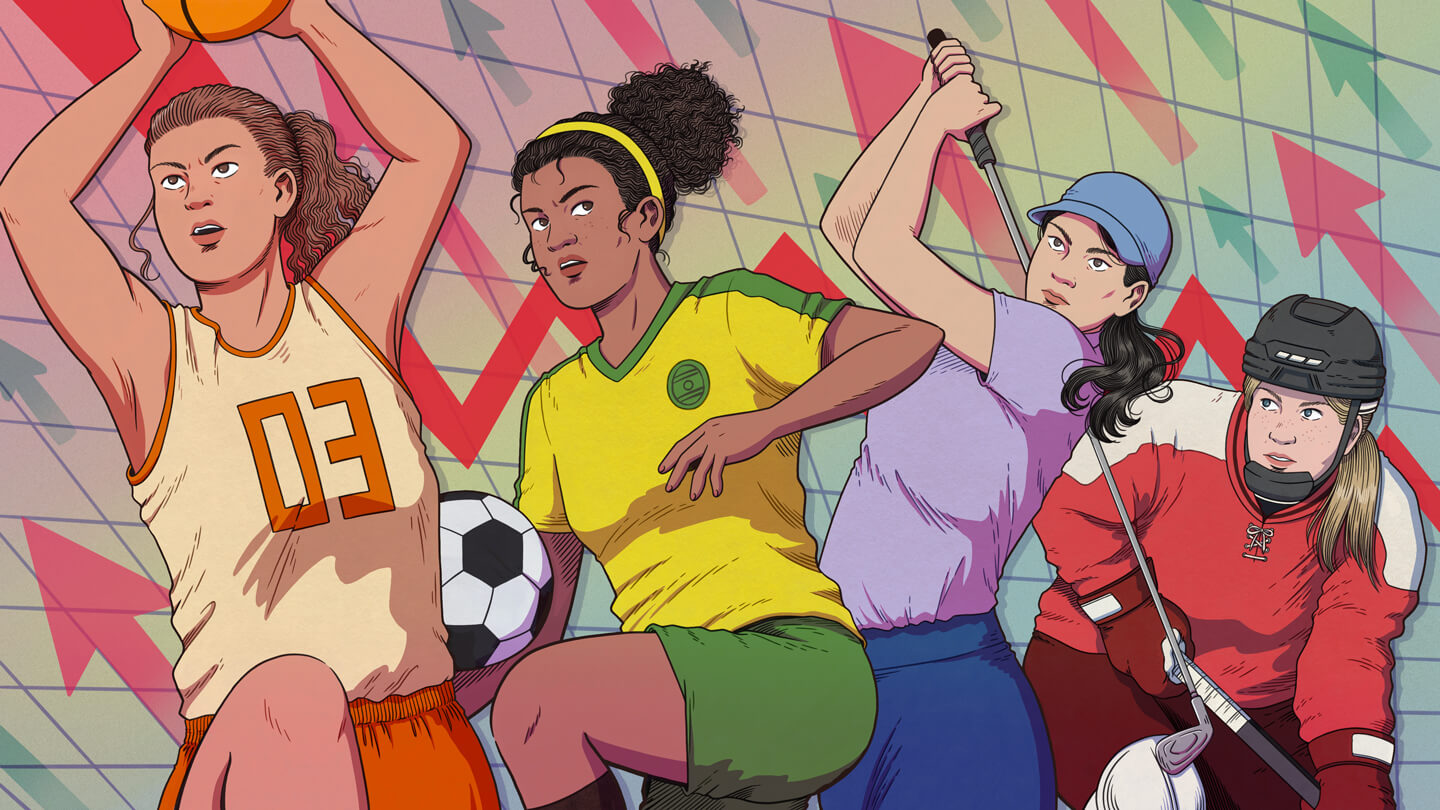
“WHEN YOU GIVE OUR ATHLETES A PLATFORM, THEY SHINE”
T
here’s a sense of momentum in women’s professional sports these days, an optimism that stretches across leagues and borders. Pinpointing exactly when it began, and where, is a book-length subject — but evidence of the strength and promise of women’s pro sports is everywhere around us, with fresh milestones arriving all the time.
The past year alone provides plenty of proof. Last summer’s FIFA Women’s World Cup saw nearly two million total fans take in the 64 matches played across 10 stadiums — an increase of more than half a million on the event’s previous record. The 2023 WNBA regular season, which wrapped up last September, reached more than 36 million total unique viewers across all American networks, the most since 2008 and up 27 per cent from 2022. The “Caitlin Clark Effect” is still sending ripples across college courts. The Iowa star’s historic scoring has led to larger audiences for women’s basketball than men’s, with Big Ten rightsholder Fox reporting an average viewership of 981,000 per game on the women’s side (compared to 946,000 on the men’s). And a few short weeks ago, on Feb. 16, the PWHL — which sold out more than a third of its games in the first half of its inaugural season — set a women’s hockey attendance record when a crowd of 19,285 gathered at Scotiabank Arena to watch Montreal take on Toronto in the “Battle on Bay Street.”